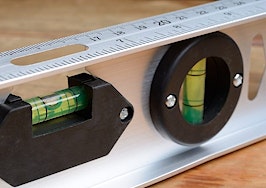- NAR reported that 5.47 million homes (at a seasonally adjusted annual rate) were sold in January 2015.
- Although mortgage rates are stabilizing, affordability and inventory are still serious problems.
The National Association of Realtors released its existing-home sales numbers this morning, showing a modest growth in home sale numbers — exactly what First American chief economist Mark Fleming said he was expecting to see.
NAR reported that 5.47 million homes (at a seasonally adjusted annual rate) were sold in January 2015. In First American’s potential home sales model this month, it was forecasting approximately 5.7 million home sales (seasonally adjusted), or a little short of that.
“The market is aligning with its potential,” said Fleming.
“With the initial delay in closings triggered by Know-Before-You-Owe seemingly behind us, and global economic uncertainty driving down mortgage rates, 2016 remains a year to be bullish on housing. First-time homebuyers will be able to benefit from strong purchasing power in a low-rate environment,” he said.

Declining mortgage rates
Any late 2015 worries about rising interest rates have subsided, said Fleming. “The Fed is now much more likely to slow down the pace of rate normalization due to deterioration in global economic conditions,” he said.
[Tweet “Mark Fleming: ‘The Fed is now much more likely to slow down the pace of rate normalization.'”]
“Mortgage rates actually declined in January due to the high degree of market volatility and the ‘flight to safety’ that drove down long-term treasury yields, the benchmark underpinning long-term mortgage rates,” he said.
“We are not expecting an interest rate rise in March — maybe in June. It is possible that we will get to the end of this year and the rates will still be at four percent,” he added.
Affordability, tightness in inventory ‘aren’t healthy’
The housing market will continue to see increases in home prices well above inflation and tightness in inventory — these things are not going to go away, said the chief economist. NAR reported that the median existing-home price for all housing types was $213,800, up 8.2 percent year-over-year.
“The spring buying season is right around the corner and current supply levels aren’t even close to what’s needed to accommodate the subsequent growth in housing demand,” said NAR chief economist Lawrence Yun in a statement. “Home prices ascending near or above double-digit appreciation aren’t healthy — especially considering the fact that household income and wages are barely rising.”
And with many households locking in on low interest rates to refinance, those homeowners will be disincentivized to move, added Fleming.
Fleming said he is less concerned about housing affordability, considering most people — 63 percent of all households — own their own homes, and the vast majority had locked in their mortgages at low rates. Therefore, the affordability question is only affecting one-third of households, he said.
“Even if prices go up and you already own the home, you are no worse off, and you are better off if you have built equity,” he said.
With 63 percent of American households owning their own home, the affordability question is only affecting one third of households, he added. It’s most important for lower- and middle-income households, said Fleming.
And he is not expecting the Presidential election to affect the housing market, he said.





